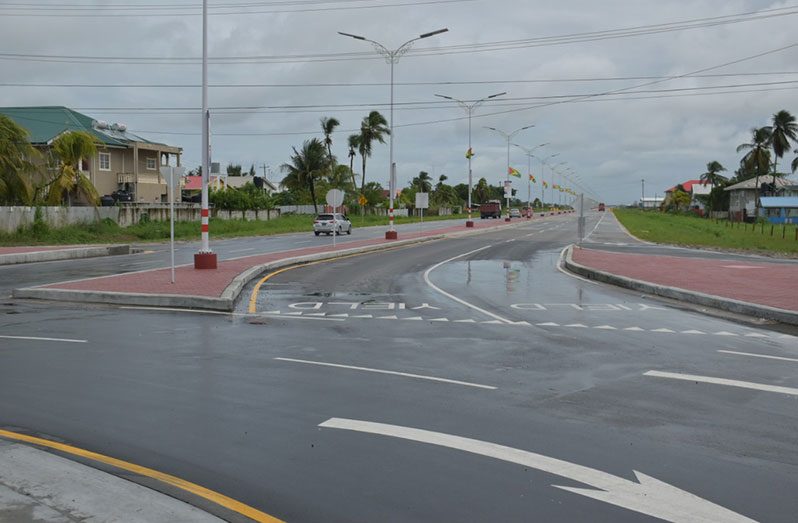–with opening of Eccles to Mandela Road
IN just one month since the opening of the $2.6 billion Eccles to Mandela Highway, traffic on the East Bank and West Bank of Demerara has already seen a massive decline in the length of time for commute to and from the city during the morning and afternoon rush hours.
And the commuters could not be happier to see the ease in anxiety and frustration that was the daily task of facing the traffic, which would, in some instances, extend the commute by over an hour.
“Right now, if I leave home about 07:30am, by 0800am I’m in town; before the [Eccles to Mandela] road opened, it would take me about an hour-and-a-half to two hours. Sometimes I had to leave home really early to try to beat the traffic,” shared Julian Nedd, an engineer attached to the Ministry of Agriculture.

Nedd, who works in Georgetown, commutes daily from Grove on the East Bank Demerara. Like many other commuters, Nedd remembers all too vividly the hassle that was getting to work in the morning and home in the afternoons.
“It was very frustrating, because you have to deal with the bus drivers cutting in front of you and all of that. By the time you reach to work, you’re frustrated, and you’re tired. In the afternoon, it was even worse; by the time you reach home, it’s about 0700pm, and you’re so tired. It was very stressful on your body, but now it’s better,” he shared.
Prior to the completion of the Eccles to Mandela Road, there was only one route into the city from the ‘Harbour Bridge’; this caused a convergence of all motorists coming from the East Bank, West Bank and West Coast of Demerara, causing severe congestion during the rush hours in the morning and afternoons. Traffic would be backed up for miles in all directions, at times at a standstill, other times barely crawling.
The situation was compounded by the massive housing schemes that were developed in the West and East Demerara, which vastly increased the population in these areas over the years, exponentially increasing traffic congestion.

Fareeza Haniff, who travels daily from Meten-Meer-Zorg on the West Coast, described the situation back then as a mental, emotional and physical strain.
“Sometimes it used to take me two-and-a- half hours to get to the office; sometimes an hour-and-a-half. It was a situation that a lot of people were not happy with, but now with the new road, it’s a lot less draining. More roads are still needed, but that will come shortly, for sure. Everything can’t happen at once,” said the West Demerarian.
COST AND STRAIN
The issue was also a particular strain on those involved in the transportation business. For bus driver Devon Manning, it meant more hours of work to make ends meet, and more gas to burn.
“It used to affect my business a lot, because the traffic is so slow, the gas that you burning it’s like two trip of gas you’re burning in one, because it’s harder for you to maneuver between the traffic. And then you end up working extra late to make a day pay,” Manning said.
Manning, who lives at Goed Intent, on the West Bank Demerara, and has been a driver for the past nine years, services the Wales to Georgetown Number 31 bus route. Already a long commute, it was made all the longer with the traffic.
“If you were supposed to work eight or ten hours, sometimes you end up working 16. You working double the time to make the same money. But right now, you could work a li’l 12 hours, because it ease li’l; yuh could work maybe from six to six,” he said.
Officer-In-Charge of Traffic for Division 4 B, Inspector Maniram Jagnanan, concurred that his job has also been made much easier with the coming on stream of the Eccles to Mandela Road.
“I have been seeing a significant increase in traffic from Mandela to Eccles, but in terms of traffic congestion along the East Bank, that buildup we used to get during the afternoon time and during the day and so forth, you’re not getting that anymore. A flow to the Mandela is helping that traffic situation,” the inspector said.
Jagnanan shared that the Traffic Department is still utilising other strategic methods such as creating a third lane on the East Bank in the morning and afternoon, as well as doing a “double lane” on the DHB during peak hours.
All of these strategies, along with the new Eccles to Mandela Road, he said, are working in tandem to make it all easier on the commuters.




.png)









